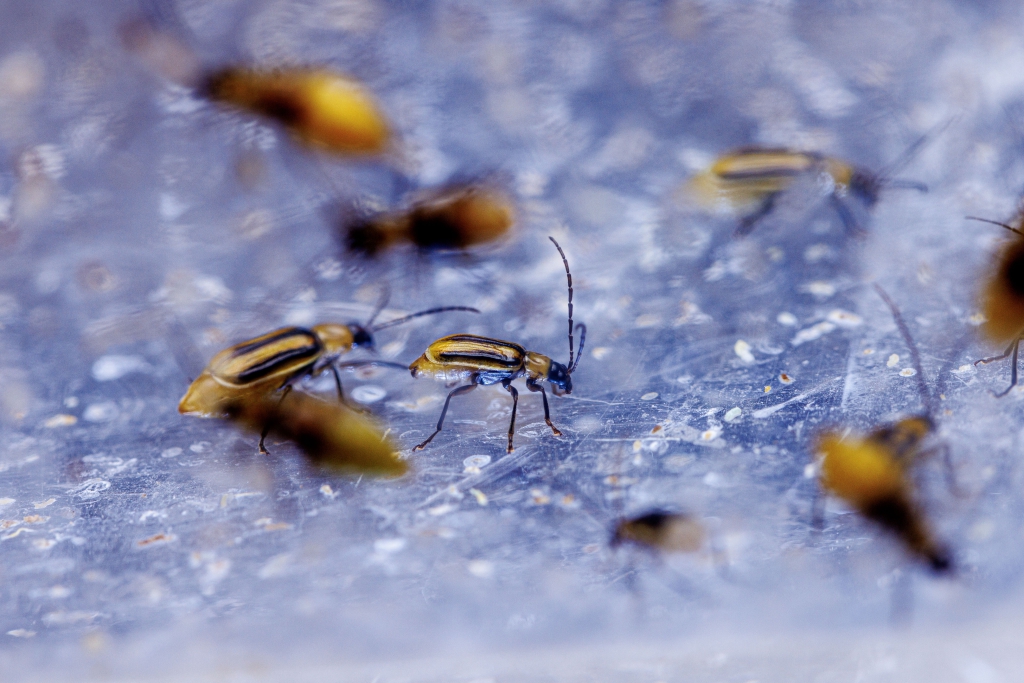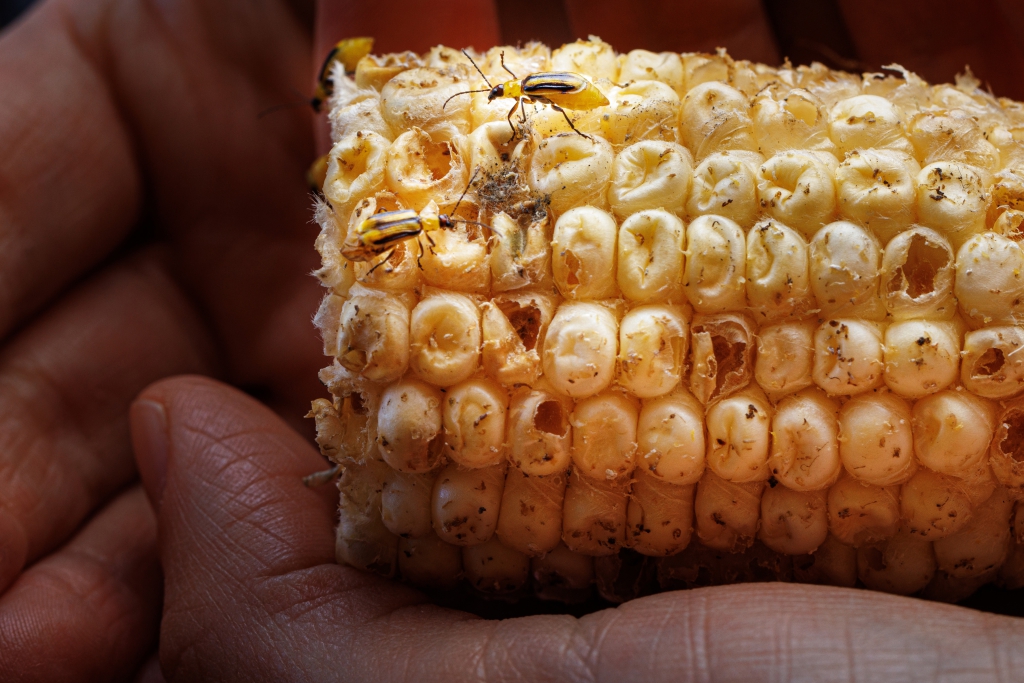Geitner Simmons, April 25, 2024
Vélez is a leader in genetic technology to contain corn rootworm
Husker scientist Ana Maria Vélez is pioneering a genetic technology to contain the western corn rootworm, which annually causes up to $2 billion in yield loss and control costs in the Corn Belt. The research seeks to contain agricultural pests by targeting rootworm genes.
This genetic technique, known as RNAi, increases rootworm larvae mortality to protect the corn plant.
Vélez, an associate professor in the University of Nebraska–Lincoln’s Department of Entomology, explained the research area in a recent presentation at North Carolina State University and later online. She and coauthor Ken Narva with Greenlight Biosciences discussed their new paper, “RNA Interference in Agriculture: Methods, Applications and Governance,” addressing a wide range of dimensions in this area of science.
The Council for Agricultural Science and Technology sponsored the recent events. The paper describes how RNAi functions, its current agriculture applications and the regulatory views of RNAi-based pesticides. It concludes with a discussion of current challenges for the commercial application of this technology in agriculture.
Vélez and Narva’s analysis provides a resource for regulatory agencies, policymakers and lawmakers, private and public institutions, and the public.
The gathering at North Carolina State provided the latest in a series of presentations Vélez has been invited to make at U.S. and international conferences.

Vélez and graduate students in her lab are advancing the knowledge in multiple ways. The researchers focus on small interfering RNA molecules derived from applied double-stranded RNA molecules. The interfering RNA molecules bind to targeted rootworm genes and prevent them from producing proteins that enable particular physiological functions.
Researchers are developing RNAi science to engineer crops for insect resistance traits or as a sprayable bioinsecticide for use in integrated pest management programs. Another research area is development of oral RNAi to control mosquitoes transmitting pathogens.
Through her Husker lab, Vélez “is doing cutting-edge work looking at manipulating the gene expression of pest insects to control those insects,” said John Ruberson, professor and head of the Department of Entomology. “Her work has focused on how interference with RNA in insect cells can disrupt the cellular mechanisms and suppress the pests.”
Vélez and her lab students, along with Lance Meinke, professor emeritus of entomology at Nebraska, pursue multiple projects in this area. They identify relevant rootworm genes, then study how the desired RNAi molecules enter a cell, are processed by it and move throughout the rootworm body. One project looks to identify the specific rootworm gene that guides larvae toward corn plant roots, which the larvae then attack.
Vélez is a global expert in this field. In September, she spoke in Washington, D.C., to industry and government representatives, sharing her expertise regarding ecological risk assessment of RNAi-based pesticides. Since 2017, she has organized an annual symposium on RNAi for the Entomology Society of America. In 2019, she briefed government representatives at the Organization for Economic Development and Cooperation in Paris on RNAi-based pesticides.
Adding genetic techniques to the inventory of preventive actions against this crop threat has particular importance in light of corn rootworms’ extraordinary adaptive ability, Vélez said.
“They have evolved resistance in different locations to different kinds of pesticides, to Bt’s (proteins toxic to rootworms) and even to crop rotation,” she said. “They learn to lay eggs on soybeans, because they know it will be sown in corn probably the following year. They are really an amazing insect in some ways, in that they adapt to everything.”

Considering that demonstrated resistance ability, it’s best to use multiple preventive methods against rootworms by incorporating RNAi, Bt proteins, insecticides and crop rotation, Vélez said.
SmartStax PRO, a genetically engineered corn seed using RNAi and Bt proteins to address the rootworm threat, became available in 2022 to U.S. producers and is seeing increased usage.
The rootworm’s resistance ability threatens over time to erode the efficacy of SmartStax PRO, however, and underscores the need to develop a comprehensive understanding of RNAi science regarding the pest. UNL is well positioned to address the gaps in knowledge in key areas: gene identification, rootworm processing of RNAi molecules, specifics of rootworm resistance capacity and applicability to other insect species.
Scholars have visited Vélez’s UNL lab to learn not only about her RNAi research, but about her mentoring. Mentorship, she said, “is a huge part with students in my program.”
After she briefed lawmakers at the 2019 international conference in Paris, Vélez asked her students to review her presentation. The aim is to get them involved, she said. “That way, they also know all the implications of the technology.”
In addition to their lab projects, students are involved in collaborative research Vélez pursues with private-sector companies.
“That way, they see the research not only from the academic point of view, but also from the industry point of view — what are the questions companies are asking?” she said. “As a result, students get broader experience.”
Entomology Genetics Institute of Agriculture and Natural Resources





